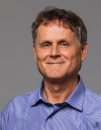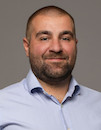Electronic Power Converters
Data is displayed for academic year: 2023./2024.
Lectures
Laboratory exercises
Course Description
The content of this course are the basic converter topologies used to convert electricity characteristics and control energy flow. Emphasis is placed on typical representatives of rectifier, inverter and DC and AC converters used in electric motor drives, process industries, power systems, renewable sources, electric vehicles. In addition to getting to known the functions of these topologies, the basic features and models of passive and active semiconductor components used in the realization of converter devices are presented. The content of this course also includes the basics of converter control to minimize impact of converter on load and electrical network and increase conversion efficiency.
Study Programmes
University graduate
[FER3-HR] Audio Technologies and Electroacoustics - profile
Elective Courses
(2. semester)
[FER3-HR] Communication and Space Technologies - profile
Elective Courses
(2. semester)
[FER3-HR] Computational Modelling in Engineering - profile
Elective Courses
(2. semester)
[FER3-HR] Computer Engineering - profile
Elective Courses
(2. semester)
[FER3-HR] Computer Science - profile
Elective Courses
(2. semester)
[FER3-HR] Control Systems and Robotics - profile
Elective Courses
(2. semester)
[FER3-HR] Data Science - profile
Elective Courses
(2. semester)
[FER3-HR] Electrical Power Engineering - profile
Elective Courses
(2. semester)
Elective Courses of the Profile
(2. semester)
[FER3-HR] Electric Machines, Drives and Automation - profile
(2. semester)
[FER3-HR] Electronic and Computer Engineering - profile
Elective Courses
(2. semester)
[FER3-HR] Electronics - profile
Elective Courses
(2. semester)
[FER3-HR] Information and Communication Engineering - profile
Elective Courses
(2. semester)
[FER3-HR] Network Science - profile
Elective Courses
(2. semester)
[FER3-HR] Software Engineering and Information Systems - profile
Elective Courses
(2. semester)
Learning Outcomes
- Describe the basic topologies of electronic power converters
- Define the basic characteristics of passive and magnetic components used in electronic power converters
- Compare the properties and characteristics of semiconductor components
- Understand the influence of temperature on the electrical characteristics of semiconductor components
- Analyze the operation of electronic power converters by conversion type
- Breakdown the complex system of an power converter into its basic components
- Compare the properties of different types of electronic power converters
- Identify the negative effects of the operation of electronic power converters on power grid and loads
- Explain the basic types of electronic power converters control
- Give an example of the use of a certain type of power converter in electric drives, process industry, power system, renewable energy sources, electric vehicles
Forms of Teaching
Lectures
Lectures are interactive, with the use of modern teaching methods and tools.
ExercisesAuditory exercises are included in the lectures.
LaboratoryLaboratory exercises are a combination of simulation exercises and exercises on physical models in the laboratory.
Grading Method
| Continuous Assessment | Exam | |||||
|---|---|---|---|---|---|---|
| Type | Threshold | Percent of Grade | Threshold | Percent of Grade | ||
| Laboratory Exercises | 50 % | 20 % | 50 % | 20 % | ||
| Mid Term Exam: Written | 30 % | 25 % | 0 % | |||
| Final Exam: Written | 30 % | 25 % | ||||
| Final Exam: Oral | 30 % | |||||
| Exam: Written | 50 % | 50 % | ||||
| Exam: Oral | 30 % | |||||
Week by Week Schedule
- Basic structures of power electronics semiconductors components, Power semiconductor devices on-state losses calculation, Semiconductor devices current ratings, Heat transfer in semiconductor devices
- Diode rectifier operation for different loads (R, RL, RLE, C), Commutation for a single-phase diode rectifier, Three-phase center-tapped rectifier operation, Three-phase full-wave rectifier operation, Multipulse diode rectifiers
- Full-wave phase-controlled rectifier operation for different loads (R, RL, RLE), Output and control characteristics of a single-phase full-wave phase-controlled rectifier, Center-tapped three-phase phase-controlled rectifier operation, Full-wave three-phase phase-controlled rectifier operation, Phase-controlled rectifiers application examples
- Fundamentals of DC-DC converters control (pulse-width modulation), Buck converter operation, Boost converter operation, Buck-boost converter operation, Real components influence on DC-DC converters operation, Switching frequency limit in DC/DC converters, Two- and four-quadrant chopper operation, DC-DC converters without galvanic isolation application examples
- Forward converter operation, Forward converter transformer equations, Full-bridge converter operation, Full-bridge converter transformer equations, Flyback converter operation, Flyback converter transformer equations, DC-DC converters with galvanic isolation application examples
- Resonant converters' common features, DC-DC resonant converters fundamentals and basic topologies, DC-DC resonant converters application examples, Soft switching converters
- Parallel and series resonant converters, Semiconductor voltage and current stress in resonant converters, Resonant converters output voltage control, Resonant inverters fundamentals and basic topologies, Resonant inverters application examples
- Midterm exam
- Current- and voltage-sourced inverters, Half- and full-bridge inverters, Voltage-source inverter operation for different loads (RL, active source), Power control fundamentals, Harmonic reduction and elimination techniques, Carrier-based pulse-width modulation, Pulse width modulated voltage fundamental harmonic
- Three-phase inverter operation, Six-step modulation, Three-phase inverter carrier-based pulse width modulation, Overmodulation, Non-sinusoidal pulse-width modulation (zero-sequence voltage), Space vector pulse width modulation, Transformer-coupled inverters, Grid-tied inverters
- AC-AC converters operation for different loads (R, RL), Three-phase AC-AC converter for inductance machine power supply, Cycloconverter fundamentals, Matrix converter fundamentals, Indirect AC-AC converter topologies
- Active front-end rectifiers fundamentals and basic topologies, Basics of control of active front-end rectifiers, Voltage and current controlled active front-end rectifiers in voltage mode, Load controlled active front-end rectifiers in voltage mode
- Active front-end rectifiers as active filters, Specialized active front-end rectifiers topologies for high power applications, Active front-end rectifiers application examples for power systems and electrical drives
- Basic structure, static and dynamic characteristics of power diodes, Basic structures and I-V characteristics of power thyristors, Basic structure, static and dynamic characteristics of power MOSFETs, Basic structure, static and dynamic characteristics of IGBTs, Semiconductor device protections
- Final exam
Literature
V. Šunde, Z. Benčić, Ž. Jakopović (2021.), Osnove učinske elektronike - Simulacijsko modeliranje, Graphis
For students
General
ID 252372
Summer semester
5 ECTS
L1 English Level
L1 e-Learning
45 Lectures
0 Seminar
0 Exercises
26 Laboratory exercises
5 Project laboratory
0 Physical education excercises
Grading System
87 Excellent
75 Very Good
62 Good
50 Sufficient


 Pristupačnost
Pristupačnost




